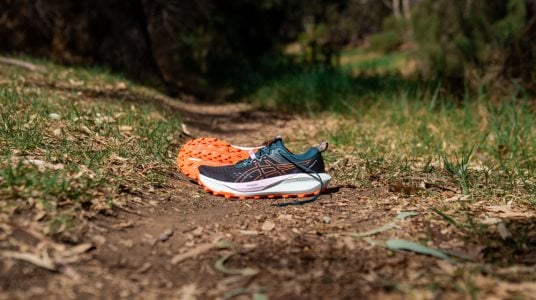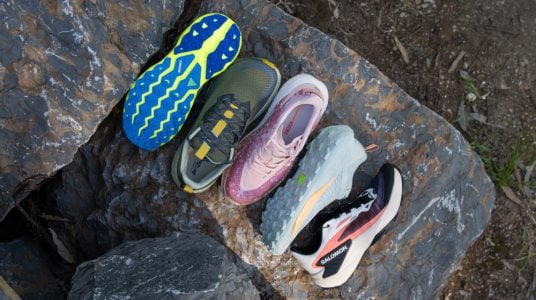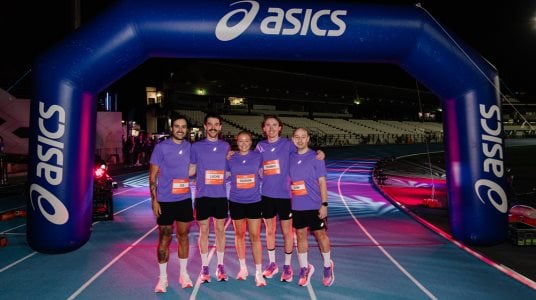The "Super Shoe" Explained

Brief history of race shoes
For decades, racing shoes were designed with a singular focus: to be as lightweight and minimal as possible. The goal was simple, reduce weight to improve speed. Early race shoes were often referred to as "flats," they featured thin midsoles, little to no cushioning and stripped-down uppers. These shoes prioritised ground feel and responsiveness, with the thought that less shoe equalled faster running
However, Nike introduced modern materials and an innovative design concept in 2016 when they released the Nike Vaporfly 4%. We then began to see a huge transformation to the landscape of racing footwear. These shoes, now commonly referred to as "super shoes," have become a staple in both elite and recreational racing alike, offering improvements in race times, running enjoyment and lower leg recovery after hard efforts.
How do we define a "super shoe"?
A super shoe is a performance based running shoe designed specifically for speed, efficiency and improving your running economy (how much effort required to run at a pace). They're commonly used in road races by runners wanting to chase a personal best, but we are also seeing more runners also use them for speed workouts in training.
So what is a super shoe? For us, to consider a super shoe "super", it has to feature a number of characteristics:
1) Performance based midsole
The most important ingredient in a super shoe that improves your running economy is the midsole. We consider there to be two key features of these midsoles.
Firstly, they typically feature stack heights up to 40mm (to comply with World Athletic rules) which gives runners plenty of protection from the road. Secondly, these foams are made from different materials to what we see in daily trainers, with PEBA (polyether block amide) being the most commonly used. The difference with these midsole materials is they not only provide a soft compression on landing, but they bounce back with higher rebound to create a faster experience. As a result, you typically have less time in contact with the ground and more time in the air moving forward (which is a good thing!)

2) Carbon plate
A rigid carbon plate is embedded within the midsole. Now, the plate often draws a lot of the attention and it is important, but the main role of it is to complement the midsole foam. The plate acts to stabilise and provide structure to a high stacked midsole material that's typically soft and unstable. It also facilitates forward momentum in combination with the midsole and rocker geometry to help keep your legs ticking over for faster efforts.
So, while there's a lot of hype around a carbon plate when it comes to improving running economy, it's not as effective without a good midsole. The design, placement and shape though is an important ingredient to the overall performance.

3) Forefoot rocker geometry
The forefoot rockers in super shoes play a key role in transitioning the foot from landing to toe-off, improving efficiency. Depending on the shoe, the rocker can start earlier for a smoother, rolling transition or act as a later-stage rocker, kicking in closer to toe-off for a more aggressive push forward.
Combined with the carbon plate and midsole geometry, this rocker design not only delivers a faster, more efficient ride but also helps reduce strain on key joints like the big toe and ankle. Additionally, it lessens the demand on the Achilles tendon compared to traditional racing shoes of the past.

4) Lightweight performance upper
The upper is all about giving just enough structure to hold your foot on top of the midsole platform and then reduce as much material as possible to maximise weight savings. That's why compared to daily trainers, you'll see minimal padding through the heel collar and tongue. It's made with super lightweight material often with open mesh to create a really breathable experience on top of the foot.
As the uppers are race and speed inspired, they tend to fit a little more snug through the width of the shoe compared to daily trainers. It's also worth noting, there's only a few models that fit wider and New Balance are the only brand who offer their race shoe in a wider width option.

Why should you get a super shoe?
The primary focus of a super shoe is to enhance speed and running economy. Unlike daily trainers, which prioritise cushioning, comfort and durability for daily mileage, super shoes are engineered for when you want to go fast! The combination of all these ingredients we've mentioned above will assist runners in maintaining their goal pace easier with less perceived effort.
Many runners also report experiencing less lower leg soreness after hard sessions and races when using super shoes. The combination of high stack performance foams, carbon fibre plate and advanced geometry helps reduce muscle fatigue, particularly in the calves and Achilles. This can contribute to quicker recovery times, allowing runners to absorb and collect more overall training volume.
While super shoes offer incredible performance benefits, they are not intended for jogging or easy paced runs. Their design shines under the demands of faster efforts, making them most effective for race day or dedicated speed sessions. They work best when a runner is moving at their race pace, rather than at slower, easy running. That's why we suggest having a shoe rotation with a daily trainer! Plus, super shoes are expensive and only typically last between 300-500km so there's no point wasting it on your easy runs.

Wrap up
Super shoes are an exciting and ever-evolving category that has brought a new level of intrigue to the running shoe world. The innovation behind these models has not only pushed performance boundaries, but has also drawn more runners into the sport, both competitively and recreationally.
There’s no denying the appeal of these shoes, but from our perspective, it’s important to use them as a tool for the specific run they’re designed for. This will allow you to get the most out of their performance benefits while maintaining a balanced training approach.
If you're wanting to understand what are some other categories of footwear, read our blogs on daily trainers and super trainers.
About the author
Nathan Pope - Runner and Shoe Nerd
I'm really passionate about running footwear and how shoes can be used as a tool to get the best of your running, whether that be general fitness or performance.
My favourite event is the marathon. I feel as though the marathon is the ultimate test both physically and mentally! It requires careful planning both within the race and during the training block and it can be super satisfying when it comes together on race day.


